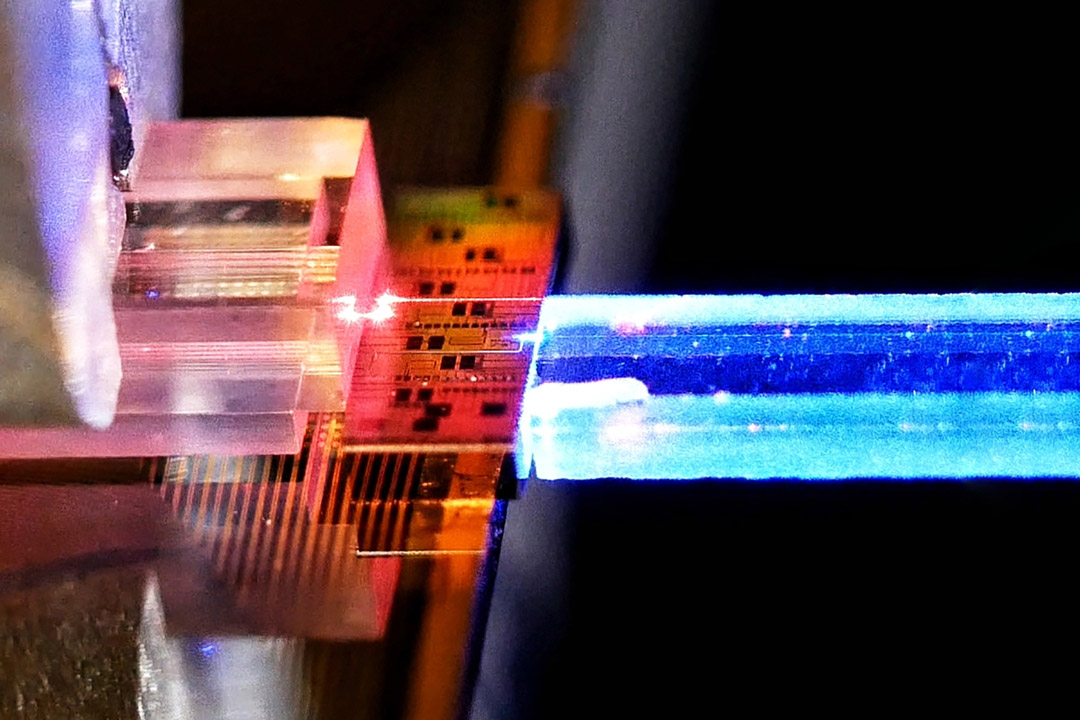The Rochester Quantum Network provides a more secure way to transmit information

RIT
RIT and University of Rochester have collaborated to develop the Rochester Quantum Network, using single photons over fiber-optic lines to transmit information more securely.
Researchers at Rochester Institute of Technology and University of Rochester recently connected their campuses with an experimental quantum communications network using two optical fibers. In a new paper published in Optica Quantum, scientists described the Rochester Quantum Network (RoQNET), which uses single photons to transmit information about 11 miles along fiber-optic lines at room temperature using optical wavelengths.
Quantum communications networks have the potential to massively improve the security with which information is transmitted, making messages impossible to clone or intercept without detection. Quantum communication works with quantum bits, or qubits, that can be physically created using atoms, superconductors, and even in defects in materials like diamond. However, photons (individual particles of light) are the best type of qubit for long distance quantum communications.
Photons are appealing for quantum communication in part because they could theoretically be transmitted over existing fiber-optic telecommunications lines that already crisscross the globe. In the future, many types of qubits will likely be utilized because qubit sources, like quantum dots or trapped ions, each have their own advantages for specific applications in quantum computing or different types of quantum sensing. However, photons are the most compatible with existing communications lines. The new paper published in Optica Quantum is focused on making quantum communication between different types of qubits in a network a reality.
“Photons move at the speed of light and their wide range of wavelengths enable communication with different types of qubits,” said Stefan Preble, professor in the Kate Gleason College of Engineering. “Our focus is on distributed quantum entanglement, and RoQNET is a test bed for doing that.”
Ultimately, the researchers want to connect RoQNET to other research facilities across New York state at Brookhaven National Lab, Stony Brook University, Air Force Research Laboratory, and New York University.
“This is an exciting step creating quantum networks that would protect communications and empower new approaches to distributed computing and imaging,” said Nickolas Vamivakas, the Marie C. Wilson and Joseph C. Wilson Professor of Optical Physics, who led the University of Rochester’s efforts. “While other groups have developed experimental quantum networks, RoQNET is unique in its use of integrated quantum photonic chips for quantum light generation and solid-state based quantum memory nodes.”
RIT microsystems engineering Ph.D. student Vijay Sundaram ’21 MS (physics) is the lead author on the paper. After taking a course in quantum, he realized that quantum optics was where he saw his future. Sundaram explained how quantum entanglement, or spooky action at a distance, is putting quantum at the forefront of new technology.
“Quantum particles can be at either end of the universe and they’ll still be completely, perfectly correlated,” said Sundaram. “These experiments have been done using bulk optics and huge telescopes. We’re trying to put all of that onto a single microchip.”
Co-authors on the paper include Evan Manfreda-Schulz, Thomas Palone, Venkatesh Deenadayalan, Mario Ciminelli, and Gregory Howland from RIT; Todd Hawthorne, Tony Roberts and Phil Battle from AdvR Inc.; Michael Fanto from the Air Force Research Laboratory; and Gerald Leake and Daniel Coleman from the State University of New York Polytechnic Institute. The research was supported by Air Force Research Laboratory.









